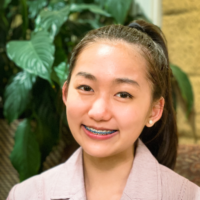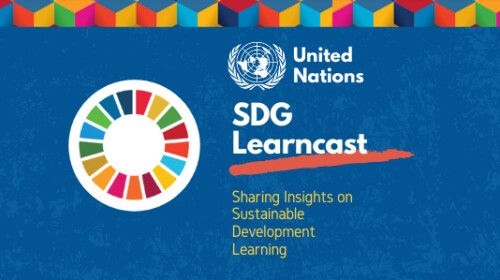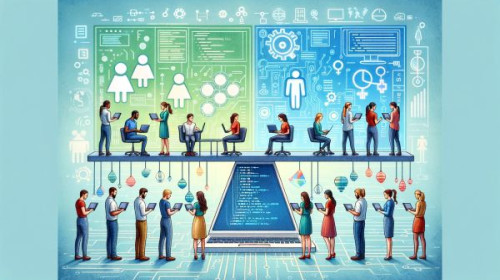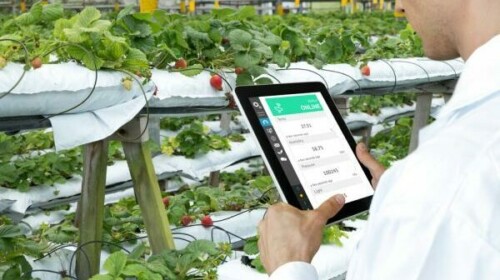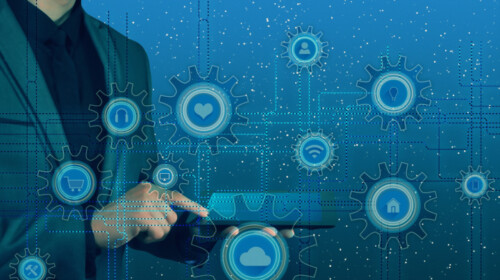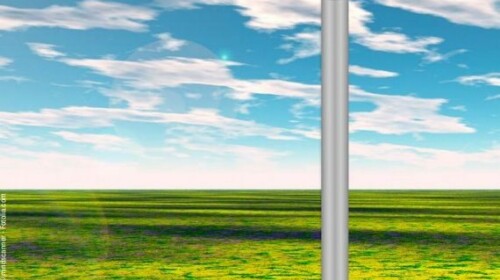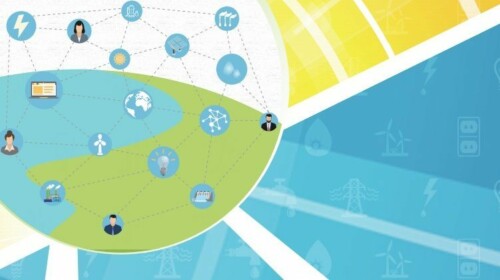According to the Sustainable Development Goals Report 2021, although 46% of sub-Saharan Africa’s population now has access to electricity–up from 33% in 2010–the region is far behind the global average of 90%. 97 million people in urban areas and 471 million in rural areas are still without access to electricity.
The lack of access is caused by several factors. On the demand side, there are low uptake and expensive connection charges while on the supply side, the energy sources are unreliable since more of the existing options in the region are renewable decentralized grids. This unreliability drives blackouts and brownouts.
In this episode, we feature Camila dos Santos Gonçalves and Grace Chenxin Liu, who are members of the New York Academy of Sciences, which selects 1,000 of the world’s brightest high school students (ages 13-17) to become part of The Junior Academy. The members are then given a global challenge to work on, together with mentors and experts, to learn how to understand global problems and find approaches to address them.
In this year’s challenge, the group was tasked to work on the Flexible Use of Electricity. After two months, the team of young people from different parts of the world presented their approach of using space satellites to respond to the energy needs but also approaching the issue holistically, addressing systemic issues, gender equality, and climate change.
Listen to this episode to learn more about how Camila, Grace and their team use space satellites to provide electricity to the most vulnerable groups in Sub-Saharan Africa.
Want to learn more about sustainable development and learning? Subscribe to SDG Learncast on podcast apps.
[Transcript of the podcast]
Paulyn Duman: Welcome to the SDG Learncast with me Paulyn Duman. In every episode, I bring insightful conversations around the subject of sustainable development and learning, helping us all to achieve a sustainable future.
In this episode, we will be talking about how to use space, specifically satellites, to address one of the biggest global challenges, providing electricity to the most vulnerable groups. With us today are Camila dos Santos Gonçalves and Grace Chenxin Liu. Welcome to the SDG Learncast.
Camila Gonçalves: Hello. Thank you so much for having us here. I am Camila Gonçalves, the Founder, Team Leader, Project Coordinator, Editor-in-Chief, and Researcher of Space Power.
Grace Chenxin Liu: Hi, thank you for having us! I’m Grace Chenxin Liu, an Editor-in-Chief, Project Coordinator, Graphic Designer, and Researcher of the Space Power team.
Paulyn Duman : Thank you so much Grace and Camila. And maybe before we start with your project on how you use space to solve one of the biggest global challenges, can you tell us about how this team project start and how did you come up with this idea?
Camila Gonçalves: Well, the Space Power Project was formed to solve the “Flexible Use of Electricity” global challenge by The Junior Academy at The New York Academy of Sciences, which was sponsored by the Royal Swedish Academy of Engineering Sciences and the Chalmers University of Technology.
Grace Chenxin Liu: So the Junior Academy is a passionate global community of problem solvers made up of talented students, STEM experts, and industry leaders who design innovative solutions to solve the world’s greatest challenges. We work and collaborate virtually on a platform called Launchpad. And we compete in these project-based challenges, focus on the UN SDGs, essentially everyone is deeply passionate and like-minded here and that’s why we were also dedicated to this project.
Camila Gonçalves: And of course we couldn’t have done this without the other team members. Namely, Joaquin de Castro from the Philippines, Mariana Vale Taveira from Brazil, Kriti Maturu from India, and Saatvik Agrawal from the United Arab Emirates. We also had a mentor – Dr. Garret Schneider, a retired aerospace engineer – who provided immense support and help throughout the process.
Paulyn Duman: And maybe Camila and Grace, if you can just let me know, like how old are your teams and how old you are, like both of you and your team basically?
Camila Gonçalves: We’re all among 13 and 18.
Paulyn Duman: Okay. And this group of 13 to 18-year-olds, you were given this problem, so what was the problem that you were trying to solve in the challenge that you were given?
Camila Gonçalves: In this challenge specifically, we were supposed to design an approach and innovative approach for flexible use of electricity. They save for either individuals, industry, or society. Just to clarify, flexibly using electricity is to use it when the supply is high and then save the surplus for times of need. Their biggest question of the challenge was: How can we use electrical energy to its greatest potential? But the challenge at the Junior academy is very flexible. So it’s up to the team to actually decide their approach and define the specific problem we wanted to solve. Of course, related to the theme. So we decided to focus on the regions that have the least energy access and where society is most severely impacted in sub-Saharan Africa (SSA).
Grace Chenxin Liu: There are many causes for this lack of access in Sub-Saharan Africa. And it’s both on the supply and demand side. So from the demand perspective, the main constraints are the low uptake and regressive connection charges. These are factors that are also correlated. From the supply perspective, one of the issues is the unreliability of renewable sources (which can be addressed by flexibly) using them.
Because most of the existing options in the region are renewable decentralized grids, and the supply becomes unreliable or uncertain at times. And these causes common blackouts.
Camila Gonçalves: Yeah. And we believe that those barriers to electricity access also hinder progress.
Paulyn Duman: And perhaps you can also give us a brief background of the project that you worked on?
Camila Gonçalves: We focused on energy flexibility as a tool to guarantee energy access – guaranteeing reliability and security of supply, and reducing the system costs and the consumer prices. Our initial hypothesis was that space could be a powerful tool to achieve the energy of flexibility, that’s why it’s called “Space Power”, as it provides real-time awareness and fast control of the grid while avoiding disturbances that may happen on the ground in a conflicted region.
Grace Chenxin Liu: So proposal was to use weather data collected online and inputted into a program inside a satellite telecommunication payload. This will basically manage renewable energy production and storage in a grid system.
Basically, we’ll monitor the weather to predict the availability of energy produced by renewable sources. And base on this, we can tell when it will be used and when it should be stored. All of this happen inside a satellite that “talks” to the grid in some sense, and it orders what should be done. So when it rains, less solar power is produced, of course, and this available energy should be stored.
Camila Gonçalves: And this will be tested for viability with a small-scale pilot, which will be the first step of the project outside the Academy. To guarantee the solution to the whole problem we present, we have a financing plan for widespread “scaling up” across SSA and possibly other regions.
Paulyn Duman: What you did was to use satellites to gather data so that you can actually know when solar energy is available and when it is in low amount. And this of course improves the predictability, the forecasting of available energy for a specific area that are actually getting this information. And this actually is contributing to the reliability of electricity.
And you already mentioned that you are trying to contribute to the achievement of the different sustainable development goals. Perhaps you can expand on how this technology that you have co-founded or project that you have co-founded, how it is benefiting people?
Camila Gonçalves: That’s a really important point because we believe that our solution can bring a positive impact to all 17 sustainable development goals, especially goals 7, 13, 5, 9, and 8.
The Goal 7, so this it’s about affordable and clean energy. It’s kinda obvious that our solution contributes to it, especially because using a real time online, open access weather data has no cost and can support research on renewable energy access, and energy product flows.
For the Goal 13 on the other hand, Climate Action, there are a couple of components that we believe. The stability and flexibility often suggests that renewable energy storage and advocacy forces for socially beneficial financial mechanism for scaling up renewable energy usages.
Grace Chenxin Liu: And then for Goal 5 on gender equality, our solution empowers local women entrepreneurs in communities and enhances girls’ education. For this, a key step is to establish a revolving fund as a financial mechanism for locally-run committees. This was referenced from a proven, successful, sustainable project by the UNESCAP. The mechanism’s purpose is to turn excess electricity into money by connecting and selling them back to the national grid. This money goes into the fund to cover costs such as for maintenance. A key feature of the fund is also to administer equal financial opportunities for women and equal education for girls and boys. This ultimately builds a more gender-inclusive sustainable community.
And that leads me to the next point of contributing to Goal 9 on Industry, Innovation and Infrastructure. So electricity is big part of infrastructure, of course. And in particular, our SCADA system for monitoring the electrical grid and controlling its storage, basically it benefits important parts of energy infrastructure, like electricity generation, distribution and its transportation.
Camila Gonçalves: And finally, Goal 8 on Decent Work and Economic Growth is pretty much related to what Grace presented. Because of our detailed Financing and Scaling up Plan empowers local communities to increase economic productivity and sustainability. It also guarantees positive economic impacts and expands the solution to the whole SSA.
Paulyn Duman: What I want to understand is you’re 14, and Camila you’re 18. And you were in high school Camila when you joined this challenge and Grace you just entered high school now this year, and what I can imagine is as young innovators, you have a lot of challenges that you faced when you join the academy, but also now with the piloting and the implementation and scaling up and I would really want to hear and I am sure a lot of our listeners would want to hear what types of challenges that you faced as young innovators?
Grace Chenxin Liu: One challenge was having to manage other commitments like schoolwork and important exams while working on this project. and that was a really big one since some of our teammates couldn’t make it to a meeting because they had an important exam. But then of course, as the other team would like compensate for that and then put in a bit more work to help out each other. It was a very flexible thing here.
Another challenge that I feel that we as young innovators face in general is “environmental” and financial constraints. So we often don’t have the space for testing and failing and our solutions or proposals nor do we have the training and skills needed to formulate our ideas into something like a business proposal.
Because this also goes with the financial constraints and contributes to why we often can’t get funding for this kind of stuff, because we’re not speaking the same language as business people and investors because that takes those special trainings that you learn like a lot later on. So it’s quite difficult to acquire the funds needed for executing our solution. Since we’re a younger generation, they may not believe us as much or want to listen to us because we seem very inexperienced.
Paulyn Duman: And perhaps you can also tell us what are your future plans for the project?
Camila Gonçalves: Definitely. What we first wanted to do is share project findings and solution that only solve this specific problem, but also to inspire more young people out there. And of course will be start contacting their organizations as Grace mentioned that this could help to bring our ideas into life because we need funds to do that.
Paulyn Duma : I think it’s also nice to hear from you your reflections that juggling, schoolwork, collaborating online with um, students from different parts of the world, from different time zones, perhaps you can share with us what lessons you’ve learned from this experience, how did your mindset, or your skillsets improved or have adopted from this experience?
Camila Gonçalves: Well, the main thing I can say is how much does experience talk to me about leadership. This was one of my first international collaborations and it was all over the world. We have never met each other in person. I understood how important it was for me as a leader to motivate and listen to the team, especially because our mentor talked with me about this before we started everything. And then it was also amazing to have everyone actually wanting to do their best for their project.
Everyone very engaged yet, but it was also assigned to you to keep managing the team focus and work, trying to put everyone on the same page. And this was quite a big thing because we had people with completely different backgrounds. So it’s natural and amazing that each one would have different ideas and thoughts process.
But going to a more technical side, my research skills also improved a lot, especially because we had a very short time, two months only to learn a new topic and consider all its break clarities and dynamics of getting feedback from experts also made me a little more mature. We could recognize our fragilities and strengths.
Paulyn Duman: Grace, how about you? How was your experience?
Grace Chenxin Liu: Yeah being a part of team this team gave me the chance to explore and learn an unexpected amount about this topic. When I was going into this at first, I didn’t expect to learn this much, not only about the subject and about the team. Camila pointed of motivating and supporting the team. I truly felt that, which is why I feel like Camila was just such an amazing team leader throughout because this was my first team project where I felt motivated and encouraged to proactively look for ways to contribute. I was eager to sacrifice or contribute as much as I could for the success of the project and to inspire others. But I’ve learned so many new things. I feel like I’ve become more mature. I learned how to better handle tasks with deadlines, work with the team, present and exchange ideas and come up with more innovative, creative ideas, even small things like scheduling meetings and taking the meeting notes. Those are stuff which I feel like are all skills that important in the 21st century. in terms of my mindset, I think I’ve become a more open-minded to other ideas and discussing with a team, back and forth, and also accepting criticism and constructive criticism actually, because the feedbacks from the experts like Camila said, it essentially important for projects to successful, but really opening up to that kind of, because you’re like being vulnerable in a way and exposing like hard work for like criticism and stuff. But ultimately just for the success of project, it was definitely worth it, of course.
Paulyn Duman: So maybe if you can give tips to our young listeners regarding international team collaboration, what are your advices to young people who have ideas and would need help to move things forward, or just to kick start some of the ideas that they would like to put it out there to solve the global challenges, that we are facing?
Camila Gonçalves: For tips on international team collaboration, I would mainly suggest establishing a system for communication right at the get-go, have a platform or all our at least most of the team members are active and can respond quickly to potential your jump messages. What the struggle of the time zones that you’ll probably have, try to use calendars or tools like When2Meet, trying to keep a fixed time for weekly meetings. If one person cannot attend, record it and take notes. If the case is all virtual, as it was in our experience, then you’ll see that their organization is the key. So try to register everything you do, take notes of the meetings, summarize what needs to be done.
Try to follow up better in your organization for the documents, folders that you may have, because you will definitely want the formation to be easily findable and understandable for the whole team. After all, everyone will be struggling with their own routines and own life, but we will also need to put everything together into the project.
Grace Chenxin Liu: For advice to young people like us who are looking or who have an idea and need help moving forward or starting, I’d say to first, start from the inside, ask yourself if a topic that you’re really interested in and want to commit to because when there’s a will, there’s a way, all of other stuff will come naturally because when you’re doing background research from open source science that you need to make sure that’s realistic and visible for planning and outlining. You’ll be motivated to do it if it’s something you really care about, it might seem obvious, but I just feel like it might not be important enough to talk about it enough.
Paulyn Duman: Thank you so much Camila and Grace for being with us at the SDG Learncast.
Camila Gonçalves: Thank you so much for having us.
Grace Chenxin Liu: Yes. Thank you so much.
Paulyn Duman: And that was Camila Goncalves and Grace Chenxin Liu. I hope you took away from this episode that you can be an innovator no matter how young or old you are. Camila and Grace were 17 and 13 years old when they participated the 60-day innovation challenge organized by the Junior Academy of the New York Academy of Sciences.
We learned in this episode that by using space satellites, which can be used to gather weather data online, the satellite can help manage renewable energy production and storage in the grid system. Through this technology, there is real-time information and fast control of the grid. It helps in increasing the predictability of when solar energy will be availabe through the weather data from the satellites. When the supply is low, the satellite ‘talks’ to the grid to order it to store available energy.
Another important lesson I got from Camila and Grace is that they look at the problem holistically, and focused more on understanding the problem before jumping into offering a solution. They did not just look at it as an energy issue. They also looked at how the solution can contribute to climate action by increasing the stability and flexibility of renewable energy usage. One aspect they also looked at, which can contribute to gender equality, was the establishment of a revolving fund as a financial mechanism for locally-run committees. The mechanism turned excess electricity into money by connecting and selling them back to the national grid and the money goes into the fund to cover costs such as maintenance. The fund also aims to provide equal financial opportunities for women and equal education for girls and boys.
You can find more of the SDG Learncast on the UN SDG:Learn website. For now, I’m Paulyn Duman. Thanks for listening.
Paulyn Duman is the Knowledge Management, Communications, and Reporting Officer at the UNSSC Knowledge Centre for Sustainable Development and is a coordinator for the Joint Secretariat of UN SDG:Learn, together with UNITAR.
The opinions expressed in the SDG Learncast podcasts are solely those of the authors. They do not reflect the opinions or views of UN SDG:Learn, its Joint Secretariat, and partners.


